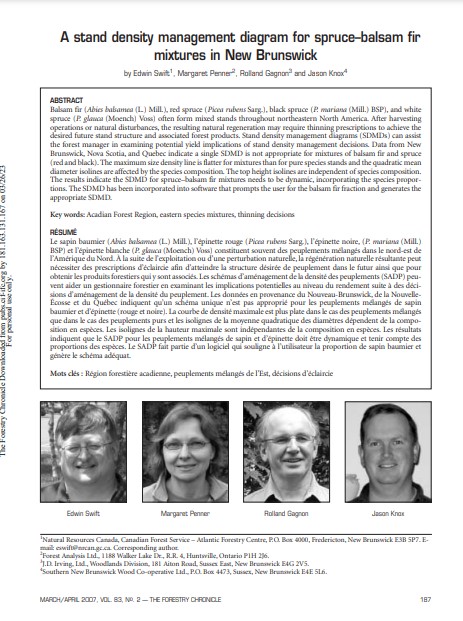A stand density management diagram for spruce–balsam fir mixtures in New Brunswick
Bosque Modelo:
Fundy
Temática:
Economía sostenible
Tipo de documento:
Artículo científico
Resumen
Balsam fir (Abies balsamea (L.) Mill.), red spruce (Picea rubens Sarg.), black spruce (P. mariana (Mill.) BSP), and white spruce (P. glauca (Moench) Voss) often form mixed stands throughout northeastern North America. After harvesting operations or natural disturbances, the resulting natural regeneration may require thinning prescriptions to achieve the desired future stand structure and associated forest products. Stand density management diagrams (SDMDs) can assist the forest manager in examining potential yield implications of stand density management decisions. Data from New Brunswick, Nova Scotia, and Quebec indicate a single SDMD is not appropriate for mixtures of balsam fir and spruce (red and black). The maximum size density line is flatter for mixtures than for pure species stands and the quadratic mean diameter isolines are affected by the species composition. The top height isolines are independent of species composition. The results indicate the SDMD for spruce–balsam fir mixtures needs to be dynamic, incorporating the species proportions. The SDMD has been incorporated into software that prompts the user for the balsam fir fraction and generates the appropriate SDMD.
Información Bibliográfica
Autor:
Swift, DE, M Penner, R Gagnon and J Knox.
Revista:
Forestry Chronicle
Año:
2007
N°:
2
País :
Canadá
Páginas:
187 - 197
Volumen:
83
Idioma:
Ingles
Palabras claves
Acadian Forest Region, eastern species mixtures, thinning decisions





